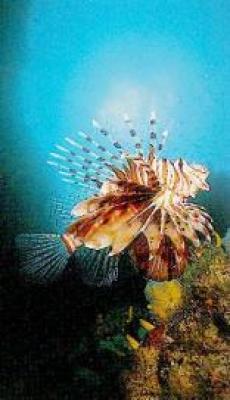Umhlanga Rocks is a very popular holiday resort, just 17km (10 miles) north of Durban. Umhlanga is also home to the Natal Sharks Board which regu- larly prepares interesting audio-visuals, lectures, shark dissections and other demonstrations to the public. Booking is advisable.
Access: By boat launched from Grannies Pool, Umhlanga Rocks; this is an easy launch into a channel.
Conditions: This site is far enough from shore to be reasonably clean when the inshore sites are undiveable.
Average depth: 20m (65ft)
Maximum depth: 27m (90ft)
This barge was sunk to create an artificial reef and has been very successful. The three crane structures at the stern attract lots of fish including coachman, batfish, emperor angelfish and butterflyfish. Bottom dwellers, such as rays and skates, can be seen on the sand around the wreck and pelagic fish, such as daga salmon and giant kingfish or trevally often visit.
Conditions: Far enough from shore to be reasonably clean when the inshore sites are undiveable.
Average depth: 18m (60ft)
Maximum depth: 27m (90ft)
This old Mozambican trawler was sunk in 1990 to form an artificial reef, and is still largely intact. Large shoals of baitfish swim around the wreck and at- tract pelagic fish which feed off them.
Lovely tropical fish can also be seen and the rather unusual pineapple fish has been spotted here. This small, plump, yellow-patterned fish hides in crevices by day and ventures out at night, flashing the light-emitting cells located at the angle of its jaws.
Access: By boat launched from Grannies Pool or from shore through the surf for very fit and experienced divers.
Conditions: Should be dived early in the morning before the north-easterly picks up, especially in summer.
Average depth: 15m (50ft)
Maximum depth: 18m (60ft)
Dolphin Reef is covered in soft corals, mushroom corals and sponges. Skates and rays are often spotted on the sand just off this lovely reef.
Access: By boat from Grannies Pool or as a shore entry for very fit and ex- perienced divers.
Conditions: Should be dived early in the morning before the north-easterly picks up, especially in summer.
Average depth: 10m (33ft)
Maximum depth: 12m (40ft)
This reef is home to a variety of tropical fish and many moray eels, including the honeycomb . Skates and rays are often seen on the sand just off the reef.
